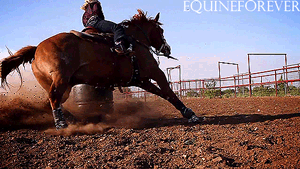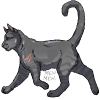Welcome to the Mountains, the homelands of the magnificent Tarvalier horse breed. You, my fair ladies and lords, as some of the most prestigious riders in the Empire, have been granted a chance at your very own Tarvalier! Read below for more information on this species and for any forms you might need. This is going to be a more limited adopt since I plan to just have fun with it in my personal time.
If you are judged worthy, you will be Chosen.
Announcements wrote:Finishing these customs as soon as I can <3
2||vetwannabe
3||TheFabulousHorse
4||onceinabluemoon567
I am still looking for artists to help me! If interested, click here! Thanks! Artist Competition. (ignore end date)
I am workshoping two new genes! One is related to Banding, that is sort of becoming the Tarvalier trademark, I guess? It is called Fill. And the other is a new marking called Marble! I will make some adopts with examples of both of these genes in a few days(hopefully) so you can have a better idea of what they look like, but in the meantime, let me know what you think about them and any other additional marking genes you would like to see. (Still considering those mane/tail gene ideas too, don't worry ^^)
A few regular adopts have been posted! Go check out adopts with purple backgrounds, as those Tarvaliers are looking to judge a rider! I will try my best to make sure contests don't overlap completely.[/b]
Story
Tarvaliers are the national breed of Taknier, a fictional medieval country. They prize horses in general as companions, work animals, and war mounts. Tarvalier are said to be a gift from the gods in ages past, their companionship granted to the royal family for protecting their natural homelands in the mountains. The large horses have long lives, living an average of 50 years.
Tarvaliers choose their riders. It is a very high honor to even be granted the chance to be judged by a Tarvalier. Each horses judges potential riders based on their own values, and only those truly worthy, by each horses' standard, can become riders. Tarvaliers will only allow their Chosen to ride them and can be very picking about anyone else handling them at all. Most only choose one rider in their life time.
Each horse has a unique personality, though the breed as a whole is highly intelligent and capable of near perfect understanding of the human language, though they cannot communicate back. They make great life companions/helpers, intimidating warhorses, and more than capable workers.
And you, young lords and ladies, have just been granted the chance by the First Prince to be judged by one.
Features
- 16-18hh
- Highly intelligent
- Live an average of 50 years
- Resistant to sun burn and to cold
- Powerful build, especially shoulders
- Tail fringe
- Feathering
- Naturally long mane/tail
- Often crop mane/tail for combat
- Eyes are any cool color or greyscale
- Coats are naturally colored + brindle that can be any cool color
- Special genetics! (see below)
Rules
Adoption
- Don't claim species as your own
- Open adopts will have a purple background
- Please don't edit forms unless asked
- If you can fill in the height, please make sure it is breed appropriate
- Each user can own up to 10 foundation horses(can breed beyond this)
- The above cap is not set in stone. When enough reach it, we can discuss extending it
- If you don't get one, there will always be more!
- They will always be yours, you can take the art anywhere, just please credit me or link back here
- Currently closed
- Please do not ask for customs while closed
- Currently closed
- Please do not ask for a breeding while closed
- Mares have [-] slots, please keep track
- Stallions can breed as many times as desired
- Breeding pairs must be one mare and one stallion
- Permission in the form of a quote/post/etc are required for Tarvaliers not owned by you
- Suggestions for the foal are allowed, but are only suggestions
- Twins are not possible for this breed
- Foal genetics are based on parents, will use a generator w/ rolls for special genetics
Genetics
Tarvaliers follow typical color genetics for most horses, but they have a few exceptions/differences.
Lacking Genetics
- All spotting genes have been completely bred out(i.e. appaloosa, birdcatcher, chubari...)
- Flea bitten does not exist
- Chimeric is not possible since twins are not, but banding can produce similar effect on one horse
Common Genetics
- Solids are very common
- Tobiano, especially minimal, is very common
- Banding is very common
Banding
Banding is a very common individual marking in Tarvaliers that typically displays a striped or brindled pattern over the base coat. Where banding crosses the mane, tail, and tail fringe, it causes striping in the hair. When present, it creates stripes unique to each Tarvalier. It is created by four known genes:
Brindle||B
This gene has incomplete dominance. It is what causes the striping pattern and also determines where on the body that striping can occur.
- BB: Brindle is turned on and causes stripes to appear spread across the entire body. Leg and facial brindle is possible.
- Bb: Brindle is turned on, but is typically confined to the withers and forelegs. Ocassionally small concentration of brindle in other locations.
- bb: Brindle is turned off.
Grouping||G(idea credit to StumpySTMP)
The Grouping gene affects the concentration of brindle. The dominant form doesn't affect brindle, but the recessive genes can cause brindle to group together into solid vertical patches, forming patterns similar to chimeric markings in other horse breeds.
- GG: brindle is unaffected
- Gg: produces thicker brindle and/or brindle that is very close together
- gg: pulls all brindle into a solid splotch/"stripe", typically at the withers, though BB horses can have multiple of these splotches
Masking||M
Masking is a gene that affects whether brindle/banding is visible on the body. Think of it as an on/off switch. It doesn't cause brindle, but if masking is on, the brindle can't be seen. This has no affect on the striping in the mane/tail/tail fringe brindle causes.
- MM: masking is turned ON, all brindle on the body is hidden
- Mm: same as MM
- mm: masking is turned OFF, brindle on the body is visible
Tinting||T
Tinting is a modifier gene for brindle that affects the color of brindling. It is not yet fully understood and has at least three separate genes. In order of dominance:
- T: brindle color is the standard lighter or darker tint from the base coat. Black and white are possible here
- ti: brindle color is a tint of any other natural color
- t: brindle color is a faint tint of blue, purple or green color
Fill||F
Causes thicker banding to either be filled with white or have a white outline and be filled with the regular banding tint.
- FF: No fill effect present in Banding
- Ff: Causes banding to be filled with white
- ff: Causes banding to be white filled with the regular tint color
White||W
White is an incomplete dominant gene in Tarvaliers that mainly acts on non-black(red) horses, making them white. White acts like any other base coat for this breed and markings can appear on top of it(but white markings won't show up). It behaves similar to the Agouti gene that causes bay horses. Incomplete dominance means that horses with WW have different coloring that those with Ww. White horses can often have any shade of greyscale mane/tail or a tail that fades from white to a color. Black horses with the Ww gene can high white tails. It is unknown why either of these things this occurs. Perhaps there is a specific gene for tail color that is unknown at this time.
- WW: red coats become all white.
- Ww: red coats become "rose". Rose is a white horse that retains red color on the points, mane/tail, and sometimes head and withers. Black coats exhibit lighter/white tails with this gene for an unknown reason.
- ww: no affect on the base coat color.
Marble||R
WIP
Marble/Marbling is a marking that appears over the base coat. It appears as a white marbling that can be thick or thin and result in splotches and other spots that can cover any part of the body but legs and face are less common. This gene is dominant, but is rarer than Banding. Marbling is affected by the ff from the Fill gene, which will cause some of the "empty" splotches of the marbling to display the horse's Tint gene color instead.
- RR: Marble is present on the horse
- Rr: Same as RR
- rr: No Marble present
Staff
Creator||Tendency
Artists||(comp coming soon)
Lines and species owned by Tendency





















